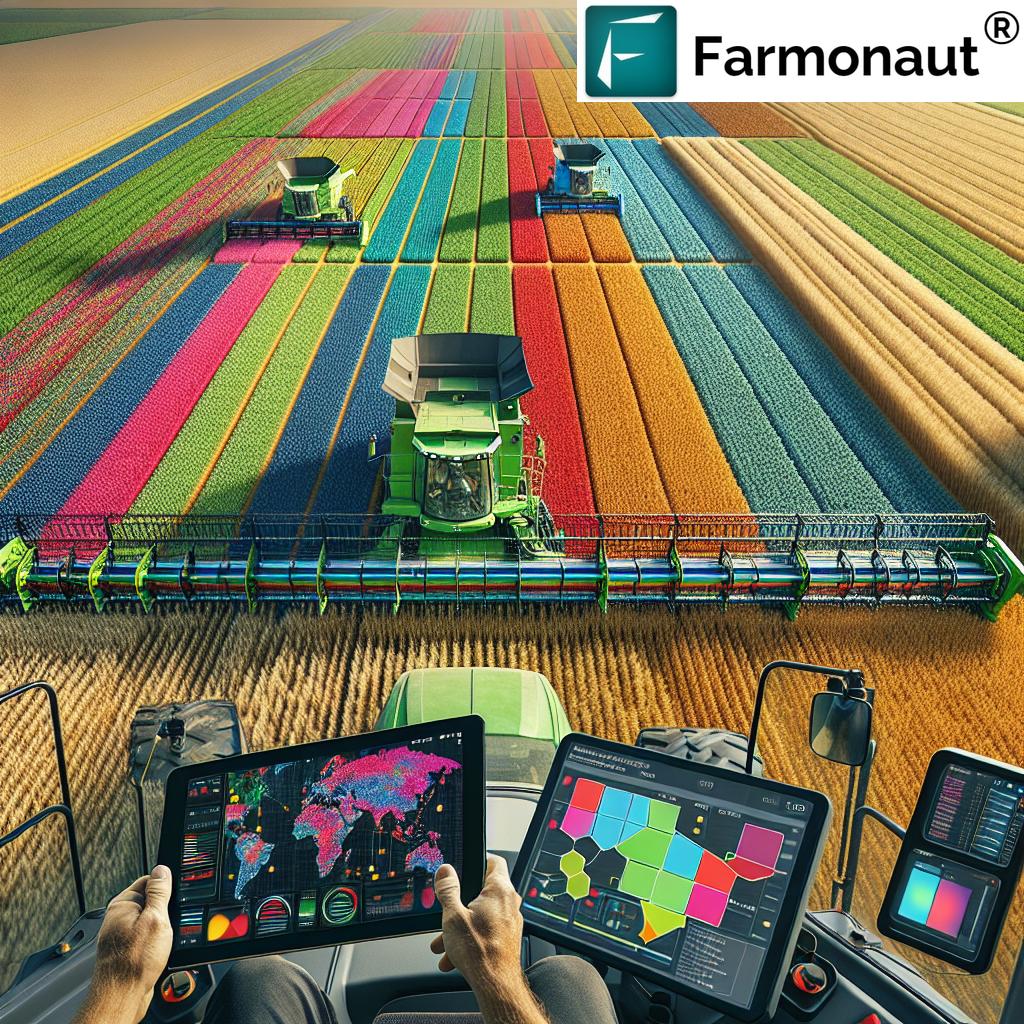Key Takeaways
- By 2025, autonomous tractors and robotic harvesters powered by AI are expected to dominate the agriculture and forestry sectors, improving efficiency and reducing labor needs.
- Innovative technologies like precision agriculture, electrification, and data-driven management systems are reshaping industry practices to meet increasing global food and timber demands sustainably.
- Farmonaut leads in providing accessible satellite-based analytics and AI-driven tools that optimize resource management and reduce environmental impacts for farmers of all sizes.
The Fourth Agricultural Revolution
Advancements in farm machinery represent a transformative era in agriculture as we approach 2025. A surge in automation, AI, robotics, and digital systems is fundamentally changing farming and forestry practices to meet the growing demands for food and timber. The integration of these technologies, including smart tractors and drones, enhances productivity and sustainability.
Driving Change in Farm Machinery
The widespread adoption of autonomous tractors and robotic harvesters marks a significant shift in how farming operations are conducted. These innovations automate processes like tilling and planting, minimizing labor costs while improving resource management. The reliance on AI ensures high precision and reduced errors, crucial for meeting the escalating global demand for agricultural products.
The push for sustainability is evident as new machinery designs prioritize environmental impact reductions. Electrification is becoming essential, with electric tractors and harvesters being introduced to decrease CO2 emissions significantly. This shift addresses both cost-efficiency and environmental concerns.
Precision Agriculture’s Impact
Precision agriculture is reshaping farming by utilizing drones and IoT technology for real-time monitoring of crop ecosystems. Farmers can make data-driven decisions based on soil health, moisture levels, and pest threats. Variable Rate Technology allows for the precise application of nutrients and water, promoting resource conservation.
The collection and integration of real-time data redefine farm management, allowing for predictive analytics and better resource allocation. These advancements are particularly beneficial for addressing environmental sustainability while maintaining productivity.
Technological Innovations in Forestry
The forestry sector is also witnessing a technological renaissance, with machines equipped with telematics and AI making operations safer and more efficient. Electric and UAV technologies are used for monitoring forests, pest detection, and optimizing timber harvesting. These innovations significantly reduce carbon footprints and improve the safety of operations.
Farmonaut’s Contributions
Farmonaut plays a pivotal role in this transformation by democratizing access to advanced agricultural technologies. The platform provides satellite-based crop monitoring, AI advisory tools, and blockchain for traceability, enabling farmers to enhance their operational efficiency and sustainability practices. Whether for smallholder or large agribusinesses, these tools help foster a more resilient agriculture and forestry industry.
As the agricultural landscape evolves, the integration of advanced technologies will be vital for sustainability and efficiency, ensuring that producers can navigate the challenges of tomorrow’s food and timber demands.
The content above is a summary. For more details, see the source article.















